Lighting has always been considered a very slow development industry. It was not until the advent of LEDs and OLEDs in the 1990s that officially opened the curtain of modern lighting development. Since then, the market share of OLED lighting in the global lighting market has started to increase year by year. According to IDTechEX, the OLED lighting market will reach 15 billion yuan (about 2.2 billion USD) in 2026.
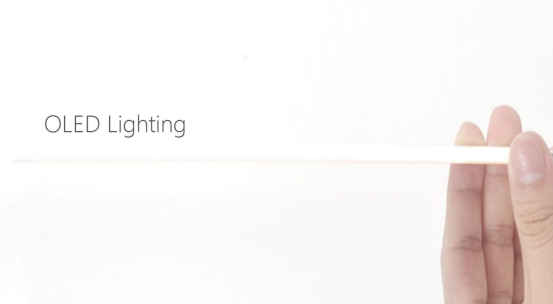

The following are two key investment points that OLED lighting can't miss.
Aspect 1: OLED lighting main market segmentation needs
Due to the continuous innovation of technology and the increasing diversification of people's needs, lighting has also moved from a slow-growing industry to a more refined market segment, including home lighting, commercial lighting, industrial lighting, architectural landscape lighting, medical and automotive. Multiple subdivisions such as lighting.
Different lighting sub-areas, there are various technical parameters for light quality, light intensity, life, color temperature, light-emitting area, etc. The following are potential market details for OLED lighting in the next decade (2016-2026) Analysis of needs in different areas.

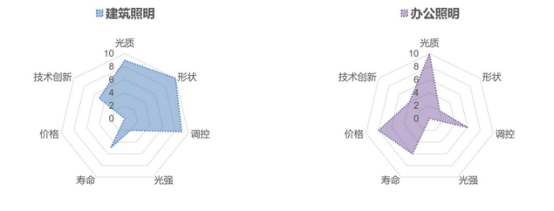

The OLED lighting market will change with different influencing factors, and will be the first to be applied in the three major lighting markets of medical lighting, architectural lighting and commercial lighting. Secondly, the automotive lighting application will also grow rapidly, once the cost is reduced, Life expectancy has increased, and household lighting, industrial lighting, and landscape lighting will also increase significantly.
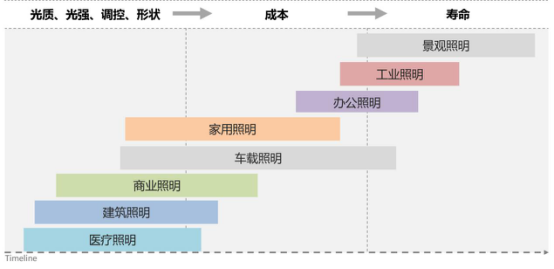
â–² Market drivers
Aspect 2: Will OLED lighting replace LED lighting?
OLED lighting is a new type of solid-state lighting technology, and is the fourth generation of lighting revolutionary technology after LED. Although LEDs are superior to OLEDs in terms of luminescence lifetime and manufacturing cost, their performance and cost gaps are gradually narrowing. The most critical determinant is that OLEDs can be used directly as luminaires, that is, they can eliminate all lampshade designs. The heat sink section, etc., simplifies the entire lighting industry value chain.

â–² LED and OLED structure comparison
The OLED lighting panel is a planar light source, and the LED is a point source, which is the biggest difference between the two. Although the LED can realize planar illumination through the light guide plate, the light effect and the light quality are far less than the natural OLED. In addition, the implementation of OLED flexible technology also gives it a considerable competitive advantage.
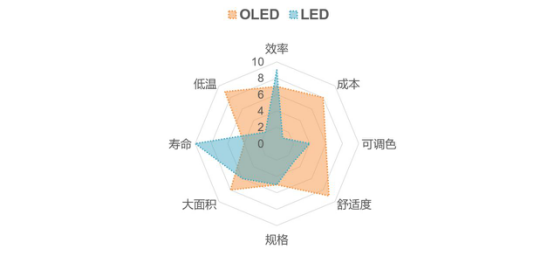
The OLED lighting panel lights up for a long time and does not generate heat. The temperature of the entire panel continuously illuminates below 36 °C. This is not only the difference from the LED, but also subverts people's perception of the heat, hot and untouchable light source.
This not only means that the light source starts to draw closer to people, which can bring people a better interactive experience, making the touch light source and the light source become a reality, and bringing infinite possibilities for wearable products, textiles and other related fields. .

When the LED point light source emits light, a large amount of heat is generated in a small area, which causes the surface temperature to rise. Therefore, when used, a heat sink is required to dissipate heat.
At present, both LED and OLED will face a huge challenge; in the future, will OLED replace LED? Only answer: It depends. The future is worth our expectation.
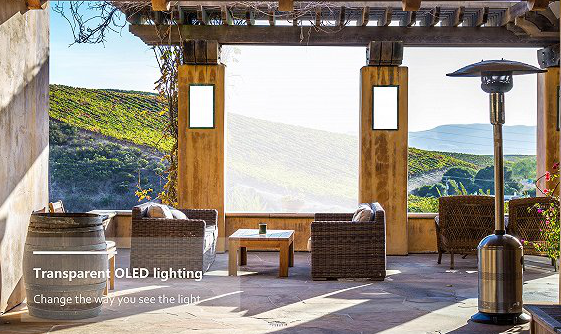
The soft OLED lighting panel will be more widely used in various fields of people's life through its unique surface illumination form. Its flexible and transparent properties will bring more novel and interesting designs and applications. The key to OLED lighting is the future.
Contributed by: Yi light OLED lighting Author: NERD Editor: Li Jie
- Max efficiency 97.6% ,European efficiency 97.3%
- Max. Charge / Discharge Current 100A
-
Reasonable energy control to increase the proportion of
spontaneous use - With BMS system to ensure high battery life
- Natural cooling design
-
Compatible with lead-acid batteries and lithium battery energy
storage systems - Remote configuration and upgrade
On grid hybrid inverter working diagram:
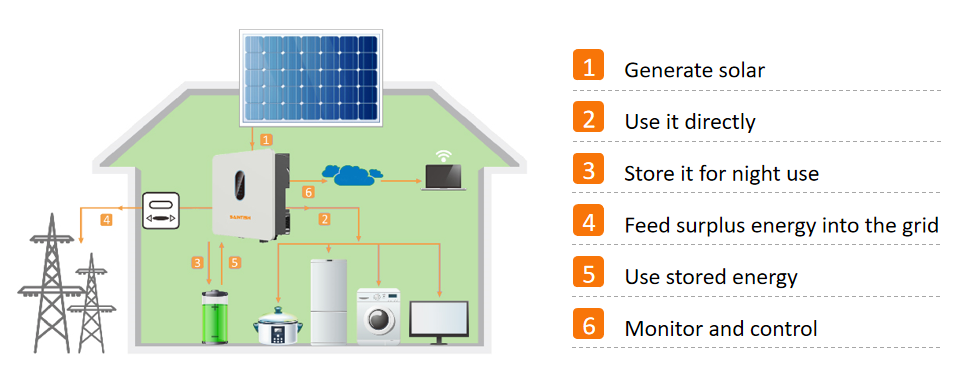
Single Phase Hybrid Inverter,Dc To Ac Converter,Solar Power Inverter,On-Grid Solar Inverter
Hangzhou Saintish Technology Co.,Ltd. , https://www.saintishtech.com
